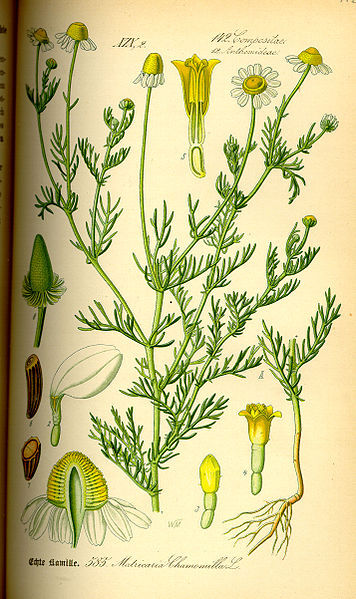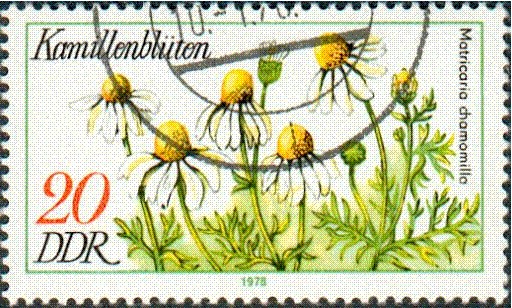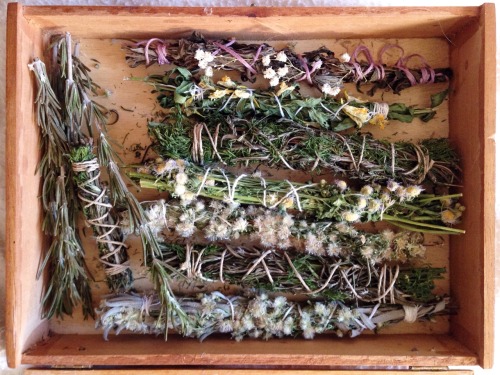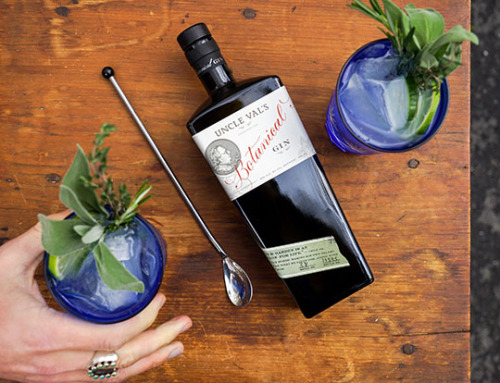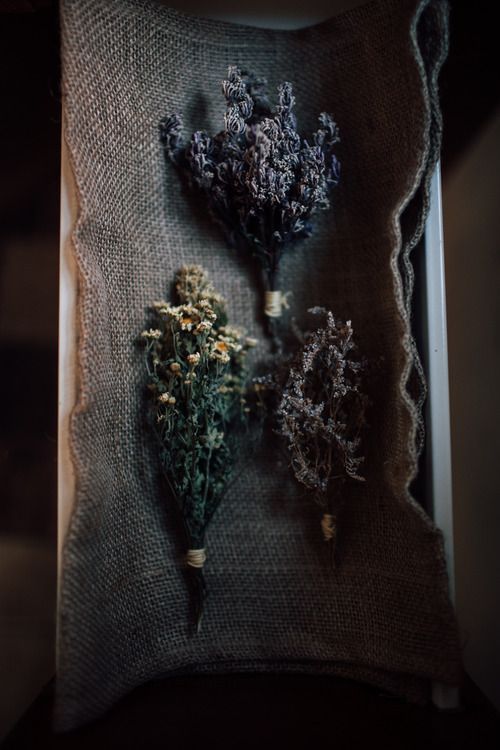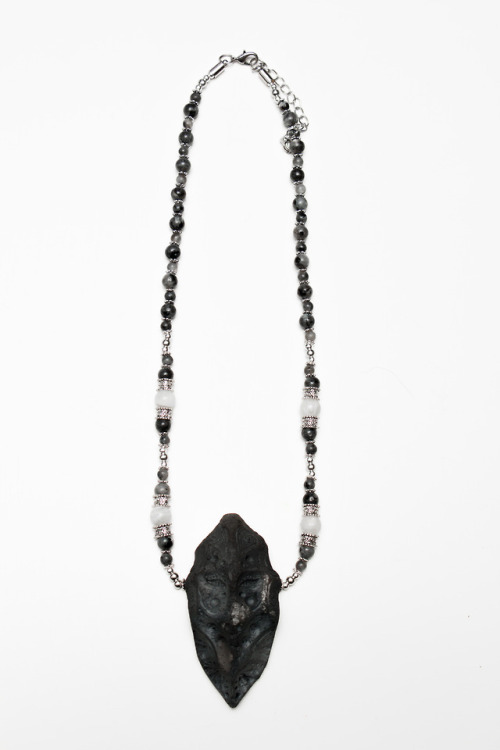#herbal

The Lost Book Of Remedies Pdf Download
The Lost Book Of Remedies Pdf Download
hello and welcome to the lost book of remedies review. Basically, “The Lost Book of Remedies” is over 300-pages of our forefathers’ most powerful natural cures that have been lost to history.
A few of them are the treatments and homemade remedies our grandparents utilized when we were kids to nurse us back to health.
Others can help us heal as we’re moving into our senior years and health problems begin to creep up.
And you do not need to be an herbalist to use it.
In fact, “The Lost Book of Remedies” was made for typical folk with no previous plant knowledge.
It will allow you to turn your yard weeds into painkillers, prescription antibiotics and many more forgotten however highly effective remedies.
In times of crisis, this book will probably wind up saving lots of American lives.
Click here to get your hands on the lost book of remedies
Medicine Chest in Your Backyard-The Lost Book Of Remedies Pdf Download
What could be much easier than growing an herb garden with no effort? Naturally, you’ll have to harvest your weeds, however, you would do that anyhow: it’s called weeding.
Spring is a particularly fertile time for gathering your weeds - roots and all - and turning them into medicines. Here then are some suggestions on how to find, harvest, prepare, and utilize a baker’s dozen (13) of common weeds that probably currently grow around you.
To make your medicines you’ll require glass jars of numerous sizes with tight-fitting lids. And a minimum of a pint each of apple cider vinegar (pasteurized), vodka (100 proof is best, but 80 proof will do), and pure olive oil (not additional virgin) or good quality animal fat such as lanolin, lard, or stomach fat from a lamb or kid. You will likewise want a knife, a cutting board, and some rags to mop up spills.
In general, you will fill a container (of any size) with coarsely-chopped fresh, but dry, plant product. (Do not wash any part of the plant other than roots, if you are using them, and be sure to dry those well with a towel before putting them in your container.) Then you will fill the jar with your menstruum, which is the vinegar, the oil, or the alcohol. Label well and permit to stand at space temperature level, out of the sunshine for at least 6 weeks prior to decanting and utilizing. (See my book Recovery Wise for more specific info on making preparations.).
A field guide is practical for positively recognizing your weeds. The one I like best is A Guide to the Recognition of New Zealand Common Weeds in Colour, complied by E. A. Upritchard. (Offered from the New Zealand Weed And Pest Control Society, P.O. Box 1654, Palmerston North) This book even shows you how the weeds look when they are emerging.
Ready? OK! Let’s go outside with a plant id guide or skilled herbalist and see what we can find.
Shepherd’s purse (Capsella bursa pastoris) is an annual in the mustard family. Cut the leading half of the plant when it has actually formed its little heart-shaped “bags” (seed pods) and make a tincture (with alcohol), which you can use to stop bleeding. Midwives and females who bleed greatly during their period praise their timely effectiveness. Gypsies claim it works on the stomach and lungs too. A dose is 1 dropperful (1ml); which may be duplicated up to four times a day.
Cleavers (Gallium aparine) is a persistent, sticky plant that grows profusely in abandoned lots and the edges of cultivated land. The entire plant is used to reinforce the lymphatic activity. I cut the top two-thirds of each plant while it is in flower (or setting seeds) and utilize alcohol to make a tincture that relieves tender, swollen breasts, PMS symptoms, and allergic reactions. A dose is 15-25 drops (.5 - 1 ml); repeated as needed.
Chickweed (Stellaria media) has many usages, consisting of scrumptious salad greens. I cut the whole top of the plant and consume it or utilize alcohol to make a tincture, which dissolves cysts, tonifies the thyroid, and aids in weight-loss. Dosage is a dropperful (1 ml), up to 3 times a day.
Daisy (Bellis perennis) is a typical perennial weed of yards and open locations. Rather different from the native daisy (Lagenifera petiolata), the little English daisy is related to feverfew and has similar capabilities. I use the leaves and flowers to make a cast (with alcohol) or medicinal vinegar which eliminates headaches, muscle pain, and allergy signs. Dosage is a dropper full of the tincture (1 ml), approximately twice a day; or a tablespoon of the vinegar in the early morning.
Dandelion (Taraxacum Officinalis) is a persistent seasonal of lawns and gardens and among the very best known medical herbs worldwide. (The native dandelion of New Zealand - Taraxacum magellanicum - is medical too.)
Those who enjoy a pure green yard curse the warm yellow flowers of typical dandelion. But those who want to see charm anywhere (such as kids and herbalists) treasure this weed. You can use any part of the dandelion - the root, the leaves, the flowers, even the flower stalk - to make a cast or medical vinegar which reinforces the liver.
A dosage of 10-20 drops of the tincture (.5 -1 ml) eases gas, heartburn, and indigestion, in addition to promoting healthy bowel movements. A tablespoon of the vinegar works well, too. More importantly, taken before meals, dandelion boosts the production of hydrochloric acid in the stomach, hence increasing the bio-availability of many nutrients, especially calcium.
The fresh or prepared green leaves are filled with carotenes, those anti-cancer, anti-heart disease helpers. And the oil of the flowers is a crucial massage balm for preserving healthy breasts. (There’s lots more information on dandelions in Healing Wise.).
Dock, also called yellow dock, curly dock, and broad dock is a seasonal plant, which my Native American grandmas use for “all females’ problems.” The Maori call it Pae Whenua or runa. It is another plant that disagrees with sheep, especially when the land is overgrazed.
I dig the yellow roots of Rumex Crispus or R. obtusifolius and tincture them in alcohol to utilize as an ally when the body’s immune system or the liver requires help. A dose is 15-25 drops (.5 -1 ml). I also gather the leaves and/or seeds throughout the growing season and make medicinal vinegar, taken a tablespoon at a time, which is used to increase blood levels of iron, lower menstrual flooding and cramping, and balance hormone levels.
If the chopped roots are taken in oil for six weeks, the resulting lotion is advantageous for keeping the breasts healthy.
Groundsel (Senecio vulgaris) and Ragwort (Senecio jacobea) are hardy perennials that have credibility for poisoning animals, like their cousin tansy. Although bad for sheep, these 2 Senecios are some of the world’s most ancient healing plants, having actually been discovered in a severe 60,000 years of age.
You can utilize the blooming tops and leaves with your alcohol to make a tincture which acts gradually to tonify the reproductive organs, ease PMS, and stop extreme menstrual pain. Dosage is 5-10 drops (.2 -.5 ml) daily, utilized just once a day, but for at least 3 months. (A bigger dosage is utilized to accelerate labor.).
Mallows (Malva neglecta, M. parviflora, M. Sylvestre) grow well in disregarded gardens and are remarkably deep-rooted. The flowers, leaves, stalks, seeds, and roots are abundant in sticky mucilage which is finest extracted by soaking the fresh plant in cold water overnight or longer or by making a medical vinegar.
The starch is extraordinarily soothing internally (reducing sore throats, upset stomachs, heartburn, irritable bowel, colic, constipation, and gastrointestinal disorder) and externally (relieving bug bites, burns, sprains, and aching eyes). The leaves, flowers, and bark (especially) of the native Hohere (Hoheria populnea) are utilized in precisely the same way by Maori herbalists.
Plantain, likewise called ribwort, pig’s ear, and the bandaid plant is a typical weed of yards, driveways, parks, and playgrounds. Determine it by the 5 parallel veins running the length of each leaf. You may discover broadleaf plantain (Plantago significant) with broad leaves or narrow leaf plantain (Plantago lanceolata) with lance-thin leaves.
Either can be utilized to make a recovery poultice or a relaxing oil commonly considered as one of the very best injury therapists around. Not only does plantain boost the speed of healing, it likewise eases pain, stops bleeding, draws out foreign matter, stops itching, avoids and stops allergic reactions from bee stings, kills germs, and minimizes swelling.
Attempt a plaster or a generous application of plantain oil or lotion (made by thickening the oil with beeswax) on sprains, cuts, insect bites, rashes, chafed skin, boils, swellings, chapped and cracked lips, rough or sore hands, infant’s diaper location, and burns.
To make a fresh plantain poultice: Pick a leaf, chew it well and put it on the boo-boo. “Like magic” the pain, itching, and swelling vanish, fast! (Yes, you can dry plantain leaves and carry them in your first aid kit. Chew like you would fresh leaves.).
To make plantain ointment: Pick large fresh plantain leaves. Slice coarsely. Fill a clean, dry, glass jar with the chopped leaves. Put pure olive oil into the leaves, poking about with a chopstick until the container is completely full of oil and all air bubbles are released.
Cap well. Place container in a little bowl to gather any overflow. Wait 6 weeks. Then stress oil out of the plant product, squeezing well. Measure the oil. Heat it gently, including one tablespoon of grated beeswax for each liquid ounce of oil. Pour into jars and permit to cool.
St. Joan’s/ John’s wort (Hypericum perforatum) This stunning perennial wildflower might be disliked by sheep farmers but herbalists love it. The flowering tops are collected after they begin to bloom (generally on Solstice, June 21) and prepared with alcohol, and with oil, to make two of the most beneficial remedies in my first-aid package.
Tincture of St. Joan’s wort not just lends one a warm disposition, it dependably alleviates muscle aches, is an effective anti-viral and is my first-choice treatment for those with shingles, sciatica, back pain, neuralgia, and headaches consisting of migraines. The usual dose is 1 dropperful (1 ml) as frequently as needed.
In extreme pain from a muscle spasm in my thigh, I utilized a dropperful every twenty minutes for two hours, or until the pain totally subsided. St. Joan’s wort oil stops cold sores in their tracks and can even eliminate herpes signs. I utilize it as a sunblock. Contrary to common belief, St. Joan’s wort does not cause sun level of sensitivity; it avoids it. It even prevents burns from radiation treatment. Eases sore muscles, too.
Self-recover (Prunella vulgaris) This odorless perennial mint is one of the great unsung therapists in the world. The leaves and flowers contain more antioxidants - which prevent cancer and heart problem, among other healthy traits - than any other plant checked. And as part of the mint family, self-recover is imbued with great deals of minerals, especially calcium, making it an especially essential ally for pregnant, nursing, menopausal, and post-menopausal females.
I put self recover leaves in salads in the spring and fall, make a medicinal vinegar with the flowers throughout the summer, and prepare the flowering tops (fresh or dried) in winter soups.
Usnea (Usnea barbata) is that many-stranded grey lichen hanging out of the branches of your apple trees or the Monterey pines planted in the plantation over there or in almost any native tree in areas of the South Island Alps, where it is referred to as angiangi to the Maori. If in doubt of your recognition:
Pull a hair gently apart with your hands, searching for a white fiber inside the fuzzy grey-green external coat. To prepare usnea, harvest at any time of the year, taking care not to take too much. Usnea grows gradually. Put your harvest in a cooking pan and just cover it with cold water. Boil for about 15-25 minutes, or until the water is orange and minimized by at least half. Put usnea and water into a container, filling it to the top with plant material.
(Water should disappear than half of the container.) Include the greatest proof of alcohol you can buy. After 6 weeks this tincture is ready to work for you as an outstanding antibacterial, countering infection throughout the body. Dosage is a dropperful (1 ml) as regularly as every two hours in intense circumstances.
Yarrow (Achellia millefolium) This beautiful perennial weed is grown in numerous herb gardens for it has a wide variety of uses. Cut the flowering tops (use just white-flowering yarrow) and use your alcohol to make a strongly-scented cast that you can take internally to prevent colds and influenza. (A dose is 10-20 drops of up to 1 ml).
I bring a little spray bottle of yarrow tincture with me when I’m outdoors and wet my skin every hour approximately. A United States Army study showed yarrow tincture to be more effective than DEET at fending off ticks, mosquitoes, and sand flies. You can likewise make a healing lotion with yarrow flower tops and your oil or fat. Yarrow oil is antibacterial, pain-relieving, and incredibly valuable in healing all types of injuries.
To find out more Please visit The lost book of remediespost
5
Snowy Day Tea
- 4 tbsp black tea
- 2 tbsp cinnamon
- 2 tbsp orange peel
- 2 tbsp chamomile
- 1 tbs ginger
- 1 tsp clove buds
Okay but this is definitely my new favorite tea.
Ways to improve it though?
- Cardamom pods
- Fresh ginger and orange peels
- Fenugreek maybe?
- Swap out black tea with hot chocolate
Snowy Day Tea
- 4 tbsp black tea
- 2 tbsp cinnamon
- 2 tbsp orange peel
- 2 tbsp chamomile
- 1 tbs ginger
- 1 tsp clove buds
Stress Ease Tea
This tea is perfect if your feeling stressed or just want a nice hot cup of tea to get cozy with. This recipe is broken down to make about 8 servings
- 4 tbsp Orange Peel
- 2 tbsp Licorice Root
- 2 tbsp Cinnamon
- 2 tbsp Holy Basil(Tulsi)
Recipe: Tea for Headaches #1
This recipe is specifically for stress induced headaches.
- 1 part White Willow Bark
- 1 part Passionflower
- 2 part Peppermint
Remember, always consult a healthcare professional when introducing herbs and supplements into your life. Always check for interactions, and be aware of possible side effects.
A note on this: recipe is much more effective if the white willow bark is boiled for 10minutes(a decotion) to pull as much medicinal qualities out of it as possible.
Today someone at work asked me what essential oils would be good for self-dedication, and I thought they said self-medication.
Of course my initial response was PURE PANIC of “You should NEVER ingest essential oils” and it took my coworker to repeat them saying self-dedication for me to stop going on a rant on how harmful essential oils are.
WOOPS.
Original book source: Prof. Dr. Otto Wilhelm Thomé Flora von Deutschland, Österreich und der Schweiz 1885, Gera, Germany
Post link
Some of the herbal bundles I’ve crafted, I’ve been saving a few favourites for a special occasion ✨
Post link
Kick off Gin & Tonic season with the Kitchen Garden Gin & Tonic!
http://www.gastronomista.com/2017/04/kitchen-garden-gin-tonic.html
#partner
Post link
Have you ever walked into a space and felt home? I walked in late to my first materia medira class into a house with lofted ceilings, images of Guadalupe, books, big windows, and dashes of color. I exhaled and settled into my seat. I got myself homemade tea and prepared myself to learn. Shelley asked us to challenge ourselves outside of our classic student type. As she talks about lessening control my pen flies put of my hand. Point taken
Oh my gosh! There’s so many of you now! Thank you all so much, genuinely. I never thought there would be so many of you interested in what I had to say on the topic of witchcraft and herbalism. It really means so much to me, truly.
On that note, I’d like to relay that I’m going to take a few days of a break from posting to rest mentally for a bit. If you have any ideas or topics you’d like me to post about, please let me know! (Reblog, ask/message, whatever method you’d prefer).
Once again, thank you all so much for supporting my small blog!
- Corvid
Post link
Convallaria
Ceramic amulet with MoonStone
Collection“Herbal Wisdom”
My instagram: https://www.instagram.com/milda_miaraku/
FB page: https://www.facebook.com/MiAraku-332429003986796/
Photo credits: https://www.facebook.com/RasaPupelytePhotography/
Stone’s properties:
Moonstone is strongly linked to the moon. The most powerful result of moonstone is that of calming the emotions. Moonstone is excellent for clearing tension from the emotions and the abdomen.
PhysicallyMoonstone:
*Excellent for assisting the digestive and reproductive systems.
*Stimulates the pineal gland and through this is able to balance the hormones.
*Has a very powerful effect on the female reproductive system.
*Can eliminate toxins and fluid retention.
*Can ease degenerative conditions of the skin, hair eyes and other organs such as the pancreas and liver.
MentallyMoonstone:
*Opens the mind to sudden, irrational impulses.
*Promotes inspiration, gentleness and compassion.
EmotionallyMoonstone:
*Encourages inner strength and growth and can protect the wearer if they are of a sensitive nature.
*Calm emotions without repressing them.
*Provides deep emotional healing and can assist with disorders that are related to stress.
SpirituallyMoonstone:
*Is excellent for meditation and for understanding oneself.
*Enhances intuition.
*Cleanse negativity and chakras
*Promote spiritual understanding.
*Can be used to enhance psychic abilities and clairvoyance.
Post link
Here’s our Winter Self-Care Rad Pack, full of inspiration, advice, recipes, and home remedies for fighting depression and supporting your body!
https://pioneerspress.com/products/winter-self-care-rad-pack
Post link
Benefits and Uses of Balloon Flower
The root of balloon flower is considered to have the following health properties; astringent, anti-inflammatory, digestive, expectorant, antitussive, analgesic, antibacterial and slightly sedative.
The use of balloon flower in herbal medicine is primarily associated with lung and throat related ailments and the herb is often combined with Chinese licorice (Glycyrrhiza uralensis) in that regard.
The root of the plant is used to treat cough, excessive mucus formation in the throat, sore throat, the common cold, flu, bronchitis, abscesses of the mouth and throat, dysentery and pains in the intestinal region.
To learn more about the benefits of Balloon Flower CLICK HERE:https://www.herbal-supplement-resource.com/balloon-flower.htmlPost link
Grindelia Herb Uses and Therapeutic Benefits
The Grindelia flower is the most widely used part of the Grindelia plant, but the whole aerial part can also be used, for therapeutic herbal remedies.
In 1875, Mr. Jas G. Steele of San Francisco made relevant research available and published a report on the effectiveness of Grindelia in the treatment of bronchial asthma.
The research was presented to the American Pharmaceutical Association in 1875 and since then, Grindelia has been seen as a possible treatment in the management of asthma and many other respiratory illnesses.
The use of Grindelia in modern times is also for the relief of respiratory illnesses.
Aside from bronchial asthma, it is also effective in relieving thick mucus secretions thereby restoring airways.
To learn more about the benefits of Grindelia CLICK HERE:https://www.herbal-supplement-resource.com/grindelia-herb.htmlPost link


